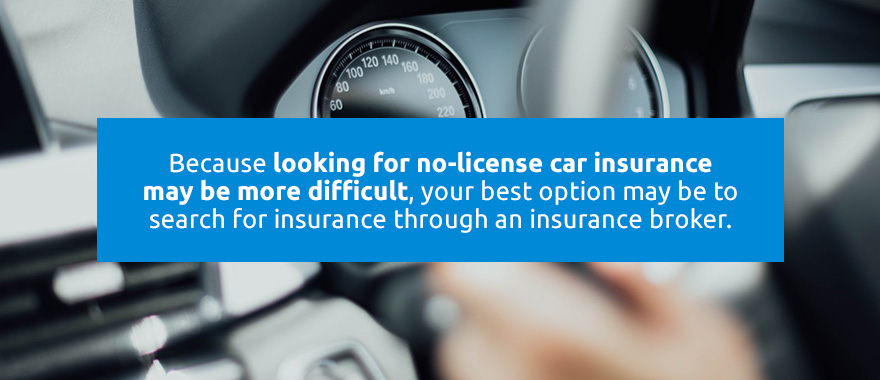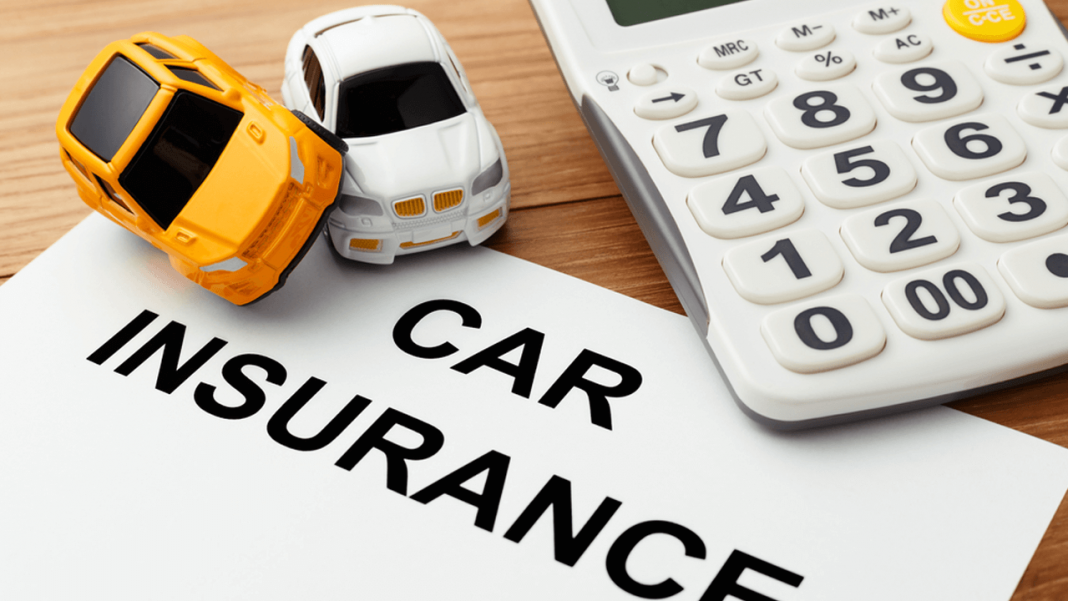Car insurance without inspection opens up a realm of possibilities for drivers seeking coverage without the hassle of inspections. From understanding the different types of policies to navigating the process of obtaining insurance, this topic delves into the intricacies of car insurance without inspection.
Exploring the factors to consider, costs involved, and a comparison with traditional car insurance, this discussion provides a comprehensive guide for those looking to secure insurance without the need for inspections.
Overview of Car Insurance Without Inspection
Car insurance without inspection refers to a type of insurance policy where the vehicle is not required to undergo a physical inspection before coverage is provided. This can be beneficial for individuals who may have difficulty arranging for an inspection due to various reasons.
Examples of Situations
- Buying a used car from a private seller who does not have the vehicle inspected.
- Renewing insurance for a car that is currently in a different location than the insurance company’s inspection center.
- Obtaining insurance for a classic car that is not driven regularly and may not be easily accessible for inspection.
Benefits and Drawbacks
- Benefits:
- Convenience for individuals who have difficulty arranging for inspections.
- Time-saving as it eliminates the need to schedule and wait for an inspection appointment.
- Flexibility in insuring vehicles that may not be easily accessible for inspection.
- Drawbacks:
- Potential risk for insurance companies as they may not have a complete understanding of the vehicle’s condition.
- Possibility of higher premiums or limited coverage options due to the lack of inspection information.
- Increased likelihood of fraudulent claims if the vehicle’s condition is not accurately assessed at the time of insurance purchase.
Types of Car Insurance Without Inspection
When it comes to car insurance policies that do not require an inspection, there are several types available to choose from. Each type offers different coverage options and may have specific requirements or eligibility criteria. Let’s explore the different types in detail below.
Liability-Only Insurance
Liability-only insurance is the most basic type of car insurance available without inspection. This type of insurance provides coverage for damages or injuries you cause to others in an accident, but it does not cover any damage to your own vehicle. It is often the most affordable option but may not provide comprehensive coverage.
Collision Coverage
Collision coverage is another type of car insurance without inspection that covers damages to your vehicle resulting from a collision with another vehicle or object. This type of insurance can be beneficial if you want coverage for repairs to your own vehicle, regardless of fault in an accident.
Comprehensive Coverage
Comprehensive coverage is a more extensive type of car insurance that covers damages to your vehicle from non-collision incidents such as theft, vandalism, or natural disasters. This type of insurance provides additional protection for your vehicle beyond just collisions.
Uninsured/Underinsured Motorist Coverage
Uninsured/underinsured motorist coverage is a type of car insurance that protects you if you are involved in an accident with a driver who does not have insurance or enough insurance to cover your damages. This coverage can help pay for medical expenses and vehicle repairs in these situations.
Process of Obtaining Car Insurance Without Inspection
Obtaining car insurance without inspection involves a straightforward process that can be completed efficiently. Below are the steps to guide you through the application process:
Application Process
When applying for car insurance without inspection, follow these steps:
- Research and compare insurance providers offering no-inspection policies.
- Contact the selected insurance company to request a quote for the desired coverage.
- Submit the necessary information and documentation as requested by the insurance provider.
- Review the terms and conditions of the policy before finalizing the application.
- Make the required payment to activate the insurance policy.
Tips for Documentation
Here are some tips to help you prepare the necessary documentation for car insurance without inspection:
- Ensure you have your driver’s license and vehicle registration information readily available.
- Provide accurate details about your driving history, including any past accidents or violations.
- Have information about your vehicle, such as make, model, and year, ready for submission.
- Keep any additional information requested by the insurance provider on hand for a smooth application process.
Approval and Activation, Car insurance without inspection
Once you have submitted your application and necessary documentation, the approval and activation process typically takes a few days. The insurance provider will assess the information provided and determine your eligibility for coverage. Upon approval, your insurance policy will be activated, and you will receive confirmation of coverage.
Factors to Consider When Choosing Car Insurance Without Inspection

When selecting a car insurance policy without inspection, there are several key factors to consider that can impact your coverage and premiums. Factors such as the type of vehicle you drive, your driving history, coverage limits, and deductibles all play a significant role in choosing the right insurance policy.
Type of Vehicle and Driving History
The type of vehicle you drive and your driving history are important factors that insurance companies consider when determining your premiums. Vehicles with a higher risk of theft or accidents may have higher premiums. Similarly, drivers with a history of accidents or traffic violations may also face higher insurance costs. It is essential to disclose accurate information about your vehicle and driving history to ensure you get the right coverage.
Coverage Limits and Deductibles
Coverage limits and deductibles are crucial aspects to consider when choosing car insurance without inspection. Coverage limits refer to the maximum amount your insurance company will pay for a covered claim, while deductibles are the amount you must pay out of pocket before your insurance coverage kicks in. Understanding your coverage limits and deductibles can help you determine the level of protection you need and how much you can afford to pay in the event of an accident.
Cost of Car Insurance Without Inspection

When it comes to car insurance without inspection, the cost can vary depending on various factors. Understanding the breakdown of these cost components can help you make informed decisions and potentially save money on your premiums.
Breakdown of Cost Components
- Premiums: The main cost component of car insurance without inspection is the premium you pay to the insurance company. This is the amount you pay regularly to maintain coverage.
- Deductibles: Deductibles are the amount you agree to pay out of pocket before your insurance coverage kicks in. Higher deductibles usually result in lower premiums.
- Coverage Limits: The extent of coverage you choose for your policy can impact the cost. More comprehensive coverage typically comes with higher premiums.
- Driving Record: Your driving history plays a significant role in determining your insurance premiums. A clean driving record can result in lower costs.
Strategies for Reducing Insurance Premiums
- Compare Quotes: Shop around and compare quotes from multiple insurance companies to find the best rate.
- Bundle Policies: Consider bundling your car insurance with other policies, such as home insurance, to receive a discount.
- Drive Safely: Maintaining a clean driving record by avoiding accidents and traffic violations can help reduce your premiums.
- Opt for Higher Deductibles: Choosing a higher deductible can lower your premiums, but make sure you can afford the out-of-pocket expense if needed.
Discounts and Incentives
- Good Driver Discounts: Insurance companies often offer discounts to drivers with a clean driving record.
- Multi-Vehicle Discounts: If you insure multiple vehicles with the same company, you may be eligible for a discount.
- Safe Driver Programs: Some insurers offer incentives for participating in safe driving programs or using telematics devices to monitor driving habits.
Comparison with Traditional Car Insurance: Car Insurance Without Inspection

When comparing car insurance without inspection with traditional insurance, there are several key factors to consider. Let’s explore the differences in terms of coverage, cost, and convenience to determine which type of insurance may be more suitable in different situations.
Coverage
- Car insurance without inspection typically offers limited coverage compared to traditional insurance policies. This may include basic liability coverage without additional options for comprehensive or collision coverage.
- Traditional car insurance, on the other hand, provides a wider range of coverage options, including comprehensive and collision coverage, as well as additional benefits like roadside assistance and rental car reimbursement.
- In situations where you require more comprehensive coverage to protect your vehicle and yourself in case of accidents, traditional car insurance may be the better choice.
Cost
- Car insurance without inspection is often more affordable in terms of premiums compared to traditional insurance policies. This is because the coverage is limited and the risk assessment does not involve a detailed inspection of the vehicle.
- Traditional car insurance policies may be more expensive due to the comprehensive coverage options and the detailed inspection of the vehicle to assess risk factors.
- If you are looking for a budget-friendly insurance option and are willing to compromise on coverage, car insurance without inspection may be the more cost-effective choice.
Convenience
- Car insurance without inspection offers the convenience of a quick and easy application process, with minimal documentation requirements and no need for a physical inspection of the vehicle.
- Traditional car insurance policies may involve a more complex application process, including a detailed inspection of the vehicle, which can be time-consuming and inconvenient.
- If you value convenience and want a hassle-free insurance experience, car insurance without inspection may be the more suitable option for you.
Wrap-Up
In conclusion, car insurance without inspection offers a convenient alternative for drivers looking to streamline their insurance process. By weighing the benefits and drawbacks, understanding the types of coverage available, and considering key factors, individuals can make informed decisions when opting for car insurance without inspection.
Questions and Answers
Is car insurance without inspection available for all vehicles?
Car insurance without inspection may have specific eligibility criteria depending on the insurance provider. It’s advisable to check with individual insurers for more information.
Can I reduce the cost of car insurance without inspection?
There are strategies to lower insurance premiums, such as maintaining a clean driving record, choosing a higher deductible, or bundling policies with the same insurer.
What are the main differences between car insurance without inspection and traditional insurance?
Car insurance without inspection typically offers convenience and speed in obtaining coverage, while traditional insurance may involve more detailed assessments but could provide broader coverage options.
